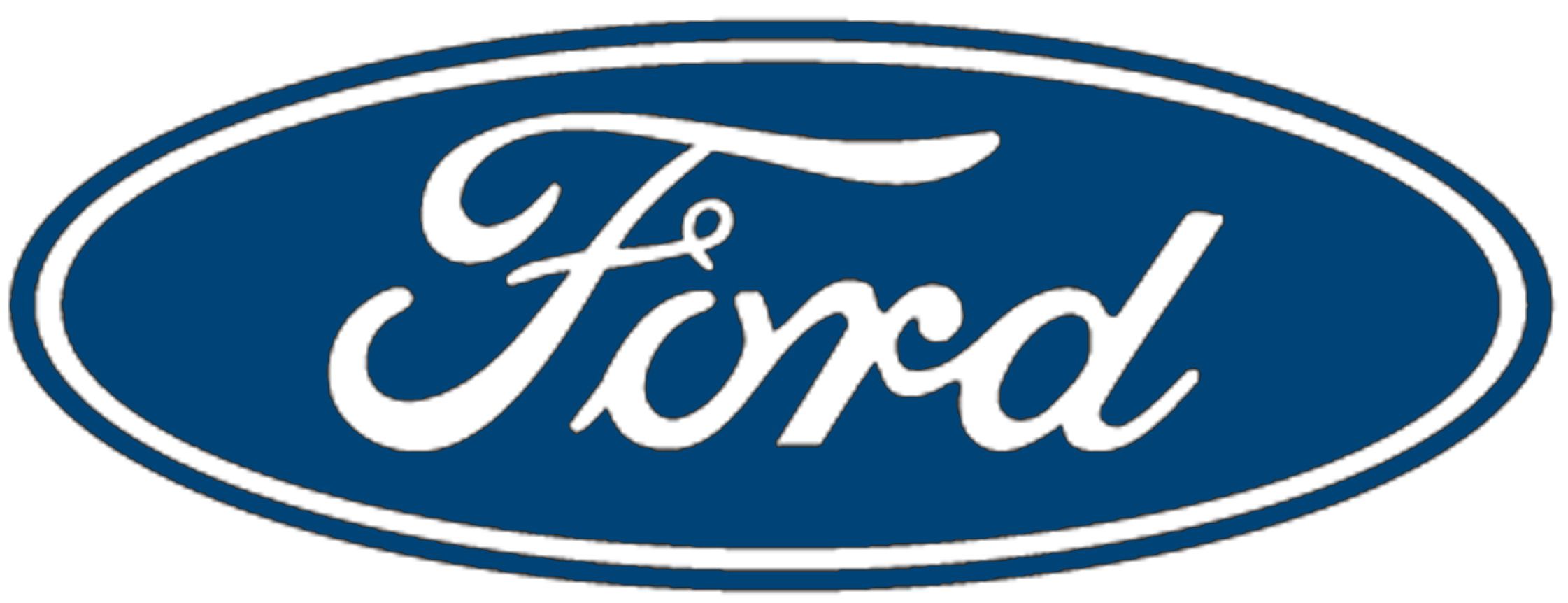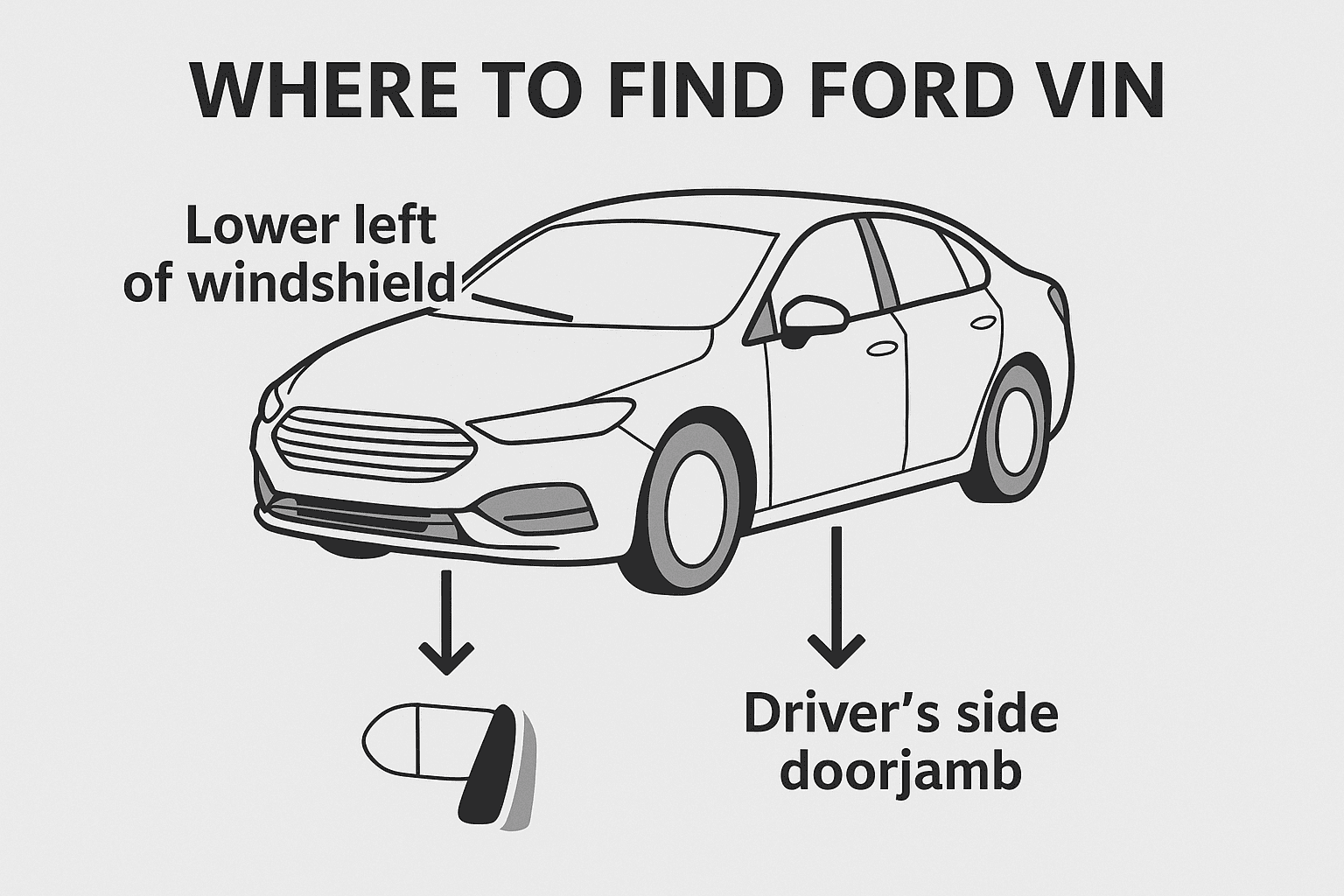Ford VIN Lookup & Decoder
Uncover Hidden Details About Your Ford with Our Free VIN Decoder and History Report
Making the right decision about a Ford vehicle requires an understanding of its build, performance, history, and condition. Whether you’re buying for personal or business use, selling, or just learning more about it, a Ford VIN decoder can be remarkably useful. Our VIN Lookup tool provides access to original build specifications, vehicle history, recall information, and more. Lookup and decode any Ford VIN to retrieve details about a Ford vehicle using VinCheck.info’s decoding tools, a free alternative to Carfax services.
Ford: Getting to Know the Vehicle America Loves
In 2023, Ford remained the leading car brand in the United States, delivering approximately 1.9 million units to US customers. Each Ford vehicle, from the rugged F-150 to the iconic Mustang, offers unique attributes that make it stand out. This #1 American brand is valued for its affordability, reliability, and strong resale value, though Ford vehicles have significant depreciation, especially in the first few years.
Popular models like the F-150, Mustang, and Explorer are known for their performance and durability, though some high-performance models may have higher maintenance costs. While high mileage isn’t necessarily a red flag if the vehicle is well-maintained, common issues such as transmission problems and electrical glitches should be checked. Ford vehicles generally offer good fuel efficiency and advanced features, though older models might lack the latest technology.

Resources for Ford Vehicle Owners
Ford Official Website
Ford Recalls Check
Ford Warranty Check
Ford Customer Service
Ford Owner’s Manual
Why Reliable VIN Decoding is Crucial for Ford Vehicle Safety and Security
The Ford full-size pickup, notably the F-150, was the second most stolen vehicle in 2022, with a staggering 48,175 thefts reported. This statistic underscores the importance of vigilance when purchasing or managing a Ford vehicle and using a reliable VIN decoder is essential. A quality tool not only provides detailed information about the vehicle’s build and history but also helps detect potential fraud, such as VIN cloning or title washing. VinCheck.info stands out by offering an in-depth analysis that reveals significant details, helping you avoid costly mistakes and ensuring you have all the information needed to make a sound decision.
Supported Ford Models
5000-Series 6000-Series 7000-Series ACTIVA AEROSTAR ANGILA ASPIRE BANTAM BELINA B-MAX BRONCO CAPRI Cargo CLUB C-MAX CONSUL CONTOUR CORCEL CORSAIR CORTINA COUGAR COUNTRY COURIER CRESTLINE CROWN CUSTOM CUSTOMLINE DEL DELUXE E-100 E-150 E-200 E-250 E-300 E-350 E-450 E-550 ECONOLINE ECONOVAN ECOSPORT EDGE ELITE ESCAPE ESCORT EXCURSION EXP EXPEDITION EXPLORER F-100 F-150 F250 F-250 F-350 F-450 F-500 F-53 F-550 F-59 FAIRLANE FAIRMONT FALCON FESTIVA FIESTA FIVE FLEX FOCUS FREESTAR FREESTYLE F-Series FUSION GALAXIE GALAXY GRAN GRANADA GRAND GT HUSKY IKON KA KUGA LASER LOBO LTD M-400 M-450 MAINLINE MAVERICK METEOR METROSTAR MONDEO MUSTANG MYSTIQUE ORION P-100 P-350 P-400 P-500 PARK PICKUP PINTO PREFECT PROBE PUMA RANCH RANCHERO RANGER SABLE SCORPIO SIERRA SKYLINER S-MAX SPRINT STANDARD STARLINER STREET SUNLINER SUPER TAUNUS TAURUS TELSTAR TEMPO TERRITORY THUNDERBIRD TORINO TOURNEO TRACER TRANSIT TRITON VICTORIA WINDSTAR ZEPHYR ZODIAC ZODIAK
What is a Ford VIN?
A Ford VIN is a Vehicle Identification Number specific to vehicles manufactured by the Ford Motor Company. Like all VINs, it is a unique code assigned to each Ford vehicle during production, providing detailed information about the car’s make, model, year, assembly plant, and other pertinent details. This alphanumeric code is composed of 17 characters and is utilized for various purposes, such as vehicle registration, warranty tracking, and accessing vehicle history reports.
The VIN is often located on the frame of the driver’s side door, easily accessible when the door is open. It can also be found on the lower driver’s side corner of the windshield, visible from outside the vehicle. Additionally, the VIN is recorded on various vehicle documents such as the point of purchase papers, insurance card, and registration forms.
How to Read a Ford VIN Number
Explore this guide for decoding universal Vehicle Identification Numbers (VINs) for models from 1982 to the present. The ISO standard VIN has been used since 1981. For earlier models, consult your dealership’s sources. A universal VIN consists of a combination of 17 alphanumeric characters, except the letters O, I, and Q to avoid confusion with numerals.
Each character or set of characters in a Ford VIN reveals details about the vehicle. Here’s a breakdown of the VIN’s sections:
| Position | ||
|---|---|---|
| World Manufacturer Identifier (WMI) | 1-3 | “1” = Country (United States) “F” = Manufacturer (Ford) |
| Vehicle Descriptor Section (VDS) | 4-8 | Character 4: Vehicle type or series Character 5: Body type Character 6: Restraint system (e.g., airbags) Characters 7-8: Engine type and series |
| Check Digit | 9 | Used for error checking, calculated from the other VIN characters |
| Vehicle Identifier Section (VIS) | 10-17 | Character 10: Model year Character 11: Assembly plant Characters 12-17: Production sequence number |
Here’s an example VIN for a Ford F-Series: 1FDXF46S12EC58316. This VIN reveals that the vehicle is a Ford F-Series made in the United States. The model is an F-450, Regular Cab, 2WD, powered by a 6.8 SOHC SEFI V10 gasoline engine producing 275HP. The vehicle was manufactured in 2002 at the Kentucky plant. The security code is 1, and its production sequence number is C58316.
Discover Detailed Vehicle History with VinCheck.info’s Ford VIN Decoder
VinCheck.info’s free Ford VIN decoder instantly provides more than the vehicle specifications mentioned above. Just enter VIN above, click “Check VIN” and obtain the following information:
- Equipment Details: Make, model, year of manufacture, body type, engine specifications, vehicle features and technical specifications
- Title Information: Information about the vehicle’s title, such as title issues, salvaged titles, or any reported title brands.
- Odometer Readings: Reported mileage readings to help identify potential odometer tampering.
- Accident History: Reported accidents and damage incidents, including the severity of the damage and the area affected.
- Title and Vehicle Use: Details on whether the vehicle was used for personal, rental, fleet, or lease purposes.
- Lemon Check: Information on whether the vehicle has a history of being identified as a lemon (a vehicle with recurring issues).
- Recalls and Defects: Any open recalls or manufacturer defects associated with the vehicle.
- Junk and Salvage Records: Information about whether the vehicle has been classified as junked, salvaged, or written off.
- Market Value: calculates the retail worth of your car, truck, or motorcycle by considering the prices at which comparable vehicles have been listed across the United States in recent months.
- Fuel Efficiency: The rating reflects the number of miles a vehicle can travel per gallon of fuel consumed.
- Safety Rating: assesses a vehicle’s safety performance through standardized crash tests and evaluations by organizations like the NHTSA or IIHS.
- Current Warranty: provides information about any existing warranty coverage that the vehicle may have from the manufacturer.
Check out VinCheck.info resources on Ford which could be important to you as an owner or as a buyer. For more interesting facts about Ford, Ford vehicles or to get a free Ford vehicle history report, visit our Ford VIN Check page or run license plate number lookup.
Enter your VIN below and run a Free Ford VIN decoder in seconds!
Frequently Asked Questions
How Can I Check Ford Recall by VIN?
To check if a Ford has an open recall in the past 15 calendar years, you can run VinCheck.info’s VIN Recall Tool for Ford or check from the official Ford website:
Approximately 36,000 Ford vehicles equipped with defective Takata air bags are under recall. The recall covers the 2006 model year Ford Ranger vehicles. According to the recall, the airbag inflators pose a higher risk of exploding in the event of a crash. The affected vehicles are being recalled to replace faulty Takata airbag inflators.
Visit the NHTSA website for additional information on Takata airbag inflator recall issue or contact Ford Customer Relationship Center in the United States at 866-436-7332.
Ford also notifies all vehicle owners about any recall. The local Authorized Dealer will repair recalled vehicles free of charge.
Can I Check Ford Parts and Accessories via Ford VIN Lookup?
Performing a VIN check allows you to effortlessly browse the online Ford store for the specific parts you need. Whether it’s for your Ford truck or sedan, you can easily locate tires or engine block components by simply entering the VIN code. Utilize the free VIN check services to ensure accuracy. Additionally, you can find the VIN on the Ford window sticker for quick reference.
How Reliable is VinCheck.info's Free Ford VIN Decoder?
VinCheck.info’s free Ford VIN decoder is highly reliable, drawing data from a wide range of trusted sources. The information for Ford car reports is obtained from government databases (such as state Departments of Motor Vehicles), insurance companies, auto auctions, salvage yards, service and repair facilities, vehicle inspection services, car dealerships, and manufacturers. This extensive collection of data ensures that the reports are comprehensive and accurate. By allowing advertisers to cover the cost of providing these services, VinCheck.info offers 100% free vehicle history reports, giving users access to crucial information about Ford vehicles at no charge.
Other Supported Manufacturers
Acura Alfa Romeo Aston Martin Audi Bugatti BMW Buick Cadillac Chevrolet Chrysler Dodge Ferrari Fiat Ford GMC Honda Hummer Hyundai Infiniti Isuzu Jaguar Jeep KIA Lamborghini Land Rover Lexus Lincoln Lotus Mazda McLaren Mercedes-Benz Mercury MINI Mitsubishi Nissan Pontiac Porsche Rolls-Royce Subaru Suzuki Tesla Toyota Volvo Volkswagen
